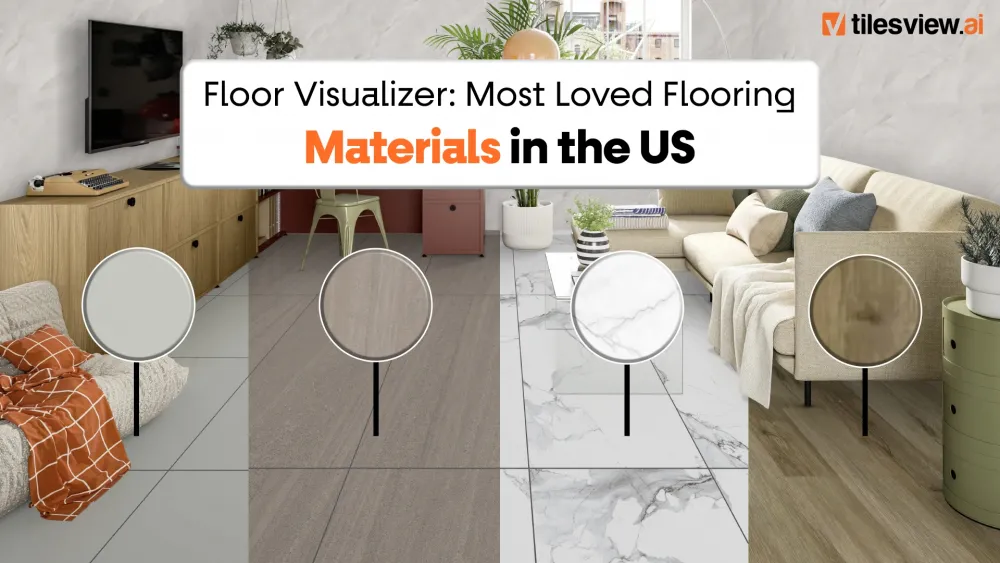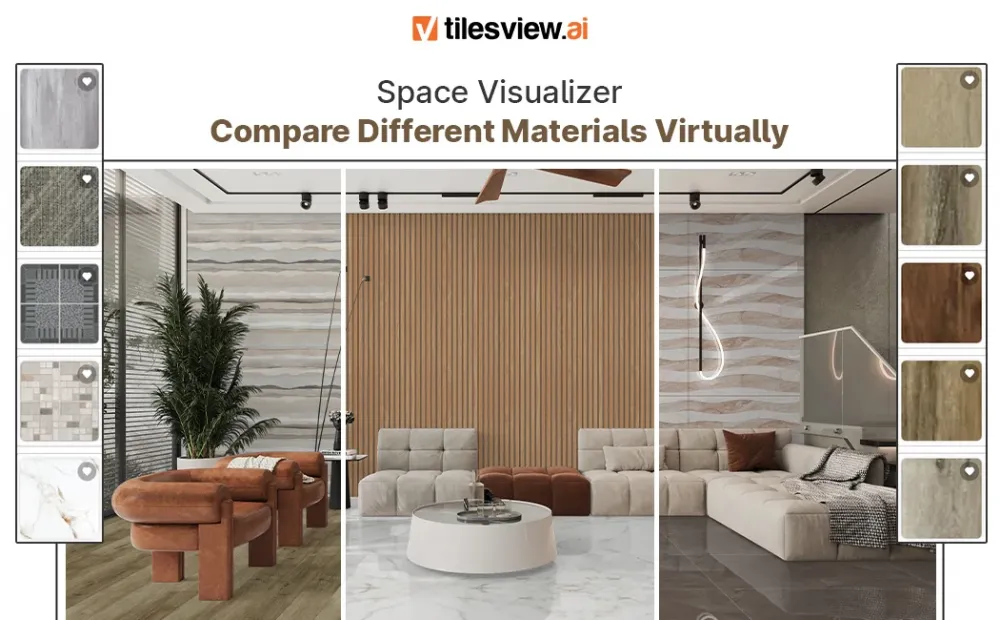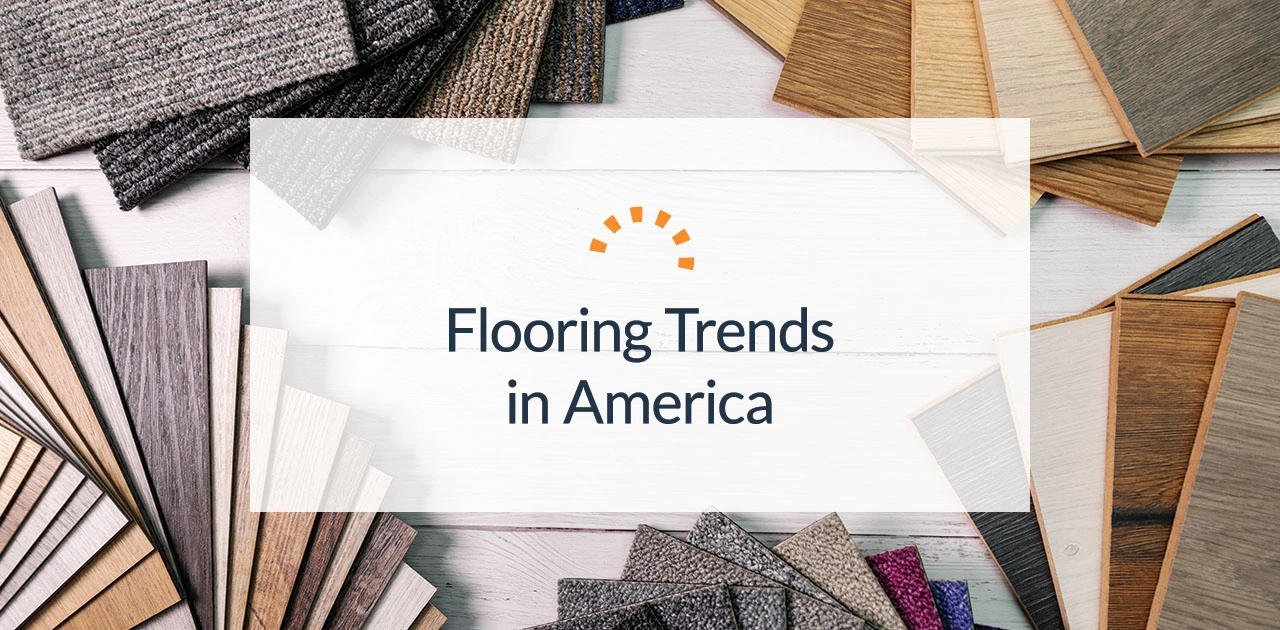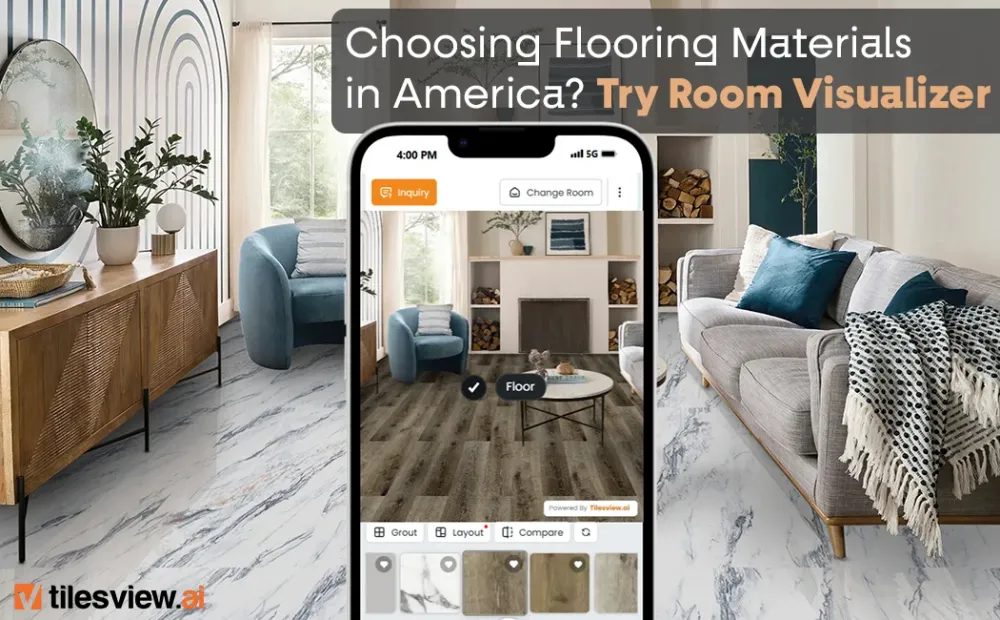ابدأ التجريبية المجانية لمدة 14 يومًا !
Jun 09, 2025
Nov 13, 2025
اقرأ المزيد

Previously, someone shopping for flooring would have to look at actual samples and try to picture them installed in their home. However, your ideas can’t carry you all the way alone. In 2025, the digital floor visualizer has completely changed the game.
Today’s homeowners, interior designers, and contractors rely on tools like Tilesview's floor visualizer to compare flooring styles virtually—before making a single commitment. A user can either choose a real photo of their room or pick from a range of templates and then place flooring products like tile, hardwood or luxury vinyl in the digital layout. Now, it’s less about the bright look of the sample under fluorescent lamps and more about how it looks and feels where you live.
More people shopping online has made digital visualization tools more in demand. When folks are home more, they pay closer attention to making their living spaces look like they want them. Flooring visualizers empower buyers to see their vision come alive in real-time—no guesswork required.

Luxury vinyl is by far the most popular type of flooring among homeowners today. Recently, reports reported that 34% of all flooring presentations in the US include luxury vinyl which shows it plays a leading role in both residential and commercial spaces.
What accounts for this rise of coronavirus cases? Simple. Since luxury vinyl is easy on the budget, durable and doesn’t allow water to pass through, it’s a clear winner for use in kitchens, bathrooms and areas that see a lot of footsteps. Nowadays, manufacturers use advanced methods to make luxury vinyl look just like genuine wood and stone, and most people can’t spot the difference.
A good flooring visualizer makes the decision even easier. With Tilesview’s floor visualizer, users can test different shades and textures of luxury vinyl in a few clicks. No pressure. No surprises. Just clarity.
Global and US trends match the observation, with luxury vinyl visuals increasing 2 percent in one year around the world, and even more in places that often experience rain. It’s not just a trend—it’s a movement.

Flooring choices often reflect more than just personal style. They’re shaped by climate, geography, and lifestyle. Let’s break it down.
In the hottest states—Florida, Texas, Arizona, and California—tile is the top pick. Why? It stays cool underfoot, resists heat, and is easy to clean. Ceramic and porcelain tiles are particularly favored, especially in homes with open floor plans and lots of sunlight.
But travel east to the rain-soaked states along the Gulf and Atlantic coasts, and the story shifts. There, homeowners are leaning into luxury vinyl’s water-resistant properties. It’s practical. It holds up under wet boots, spilled coffee, or the occasional plumbing mishap.
This is where a tile visualizer or a broader flooring visualizer really shines. It doesn’t just let users see different styles—it helps them make region-specific, weather-smart decisions. Flooring, after all, isn’t just about looks. It’s about lifestyle compatibility.

Beyond practical concerns, American homeowners are becoming more eco-conscious. That shift is playing out in flooring preferences, too.
Materials like bamboo, cork, and reclaimed wood are gaining traction. Not only do they have a lower environmental impact, but they also bring unique textures and tones into the home. Earthy neutrals, warm beiges, and natural grains are in. The sterile, cold gray trend of past years? Fading fast.
Design-wise, patterns like herringbone, chevron, and oversized planks are popping up everywhere. People want character underfoot, something that feels custom rather than cookie-cutter.
Floor visualizers help homeowners experiment with these bold ideas without lifting a finger. Want to try a reclaimed wood look in a herringbone pattern? Just click and swap. Curious how cork would look in your kitchen? Visualize it instantly.
Tilesview's flooring visualizer even makes it easy to compare eco-friendly options side by side, ensuring homeowners don’t sacrifice style for sustainability.

Flooring used to be one of the toughest interior decisions. Now, visualizers are removing the friction.
These tools don’t just offer a digital makeover. They provide psychological reassurance. When shoppers can see what they’re getting, they’re more likely to move forward with a purchase. They also make fewer returns, reducing waste and hassle.
Modern room visualizer tools use AI and machine learning to offer more tailored suggestions. Some even account for lighting, layout, and furniture to deliver hyper-realistic previews. As Tilesview and other platforms advance, expect even more personalization.
A tile visualizer might suggest complementary grout colors or transition pieces, while a broader flooring visualizer could guide users through layering with rugs or defining open-plan zones. It’s about painting the whole picture, not just laying down planks.
Try Free Flooring Visualizer Tool
As we move further into 2025, one thing is clear: virtual flooring tools aren’t just a novelty—they’re a necessity.
Whether you're a homeowner remodeling your first kitchen or a seasoned designer curating a luxury interior, using a space visualizer streamlines the process. You don’t need to guess. You don’t need to stress. You just need to visualize.
Tilesview is leading the way with an intuitive, fast, and free floor visualizer that makes choosing the perfect surface as easy as uploading a photo. Tile visualizer? Check. Hardwood, vinyl, stone, and laminate? All covered.
And as worldwide report reminds us, data is the new design partner. With nearly 200 million consumer interactions analyzed, the trends are unmistakable. Luxury vinyl is in. Tile remains strong. Sustainability is the new luxury.
So go ahead. Experiment. Play. Compare. That dream floor you’ve been pinning on your mood board? It's just a few clicks away.